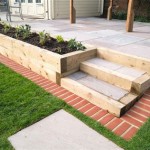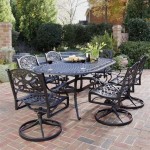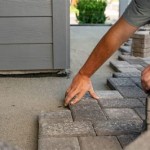Building Your Own Patio Furniture Kitchen: A Comprehensive Guide
The allure of outdoor living has driven many homeowners to invest in creating comfortable and functional patio spaces. Extending the functionality beyond mere seating, the integration of a patio kitchen has become increasingly popular. However, the cost associated with purchasing pre-fabricated outdoor kitchen setups can be substantial. Therefore, constructing your own patio furniture kitchen presents a financially viable and creatively fulfilling alternative. This article details the necessary considerations, planning stages, material selection, and construction processes involved in building a personalized and efficient outdoor kitchen setup.
A patio furniture kitchen, in this context, refers to an outdoor cooking and dining area built primarily using modular, freestanding, or semi-permanent structures. Unlike a fully integrated outdoor kitchen with built-in appliances and elaborate masonry, a patio furniture kitchen prioritizes flexibility and affordability, often utilizing repurposed or DIY-built furniture components.
I. Planning and Design Considerations
The initial phase of building a patio furniture kitchen revolves around meticulous planning. This stage dictates the overall functionality, aesthetic appeal, and longevity of the final product. Several key factors warrant careful consideration:
1. Spatial Assessment: A comprehensive assessment of the available patio space is paramount. This involves measuring the dimensions of the area, identifying any existing structures or landscaping features that may influence the layout, and considering pedestrian traffic patterns. Optimizing space utilization is crucial, particularly in smaller patios. Consider the placement of seating areas, cooking zones, and storage solutions to ensure comfortable movement and efficient workflow. Draw a basic sketch of your patio, noting existing features such as doors, windows, and steps. This visual aid will help you visualize potential layouts.
2. Defining Functional Requirements: Determining the specific functionalities of the patio kitchen is essential for informed design decisions. This involves identifying the desired cooking appliances, such as a grill, smoker, or side burner. Consideration should also be given to food preparation surfaces, storage for utensils and cookware, and a designated area for dining. The frequency and scale of outdoor cooking and entertaining will significantly influence the required functionalities. For example, frequent large gatherings may necessitate a larger grill and more extensive preparation space.
3. Style and Aesthetics: Harmonizing the patio kitchen's design with the existing architectural style of the house and the surrounding landscape is crucial for a cohesive aesthetic. Consider the color palette, material choices, and overall design theme. Options range from rustic and natural to modern and minimalist. Sourcing inspiration from online resources, home improvement magazines, and professional landscaping designs can assist in developing a comprehensive aesthetic vision. This includes the style of furniture, the type of countertop materials, and the overall ambiance of the outdoor space.
4. Budget Allocation: Establishing a realistic budget is a critical step in the planning process. This budget should encompass the cost of materials, tools, appliances, and any necessary professional services. Prioritizing essential elements and exploring cost-effective alternatives can help maintain budgetary control. Researching material prices from various suppliers and obtaining multiple quotes for professional services can ensure informed decision-making. It is prudent to allocate a contingency fund to address unforeseen expenses that may arise during the construction process.
5. Regulatory Compliance: Before commencing construction, it is imperative to investigate local building codes and regulations pertaining to outdoor kitchens. Specific requirements may exist regarding setbacks from property lines, gas line installations, and electrical work. Obtaining the necessary permits and adhering to these regulations ensures legal compliance and prevents potential complications in the future. Contacting the local building department or consulting with a qualified contractor can provide clarity on applicable regulations.
II. Material Selection and Sourcing
The selection of appropriate materials is crucial for the durability, functionality, and aesthetic appeal of the patio furniture kitchen. The materials should be chosen based on their resistance to weather conditions, ease of maintenance, and compatibility with the overall design aesthetic.
1. Framing Materials: The framework of the patio kitchen furniture is typically constructed using wood, metal, or composite materials. Pressure-treated lumber is a popular choice for wood framing due to its resistance to rot and insect damage. Metal framing, such as steel or aluminum, offers superior strength and durability but may require rust-proofing. Composite materials provide a low-maintenance alternative that resembles wood but is resistant to moisture and decay. Selecting the appropriate framing material depends on budgetary constraints, desired lifespan, and aesthetic preferences.
2. Countertop Surfaces: The countertop surface is a critical element of the patio kitchen, providing a durable and functional workspace. Popular options include concrete, tile, stone, and stainless steel. Concrete countertops offer a customizable and relatively inexpensive option, while tile provides a wide range of design possibilities. Stone countertops, such as granite or marble, offer a luxurious and durable surface but can be costly. Stainless steel is a hygienic and easy-to-clean option that is well-suited for food preparation areas. The choice of countertop material should consider aesthetics, durability, maintenance requirements, and budget.
3. Appliance Selection: The selection of cooking appliances is a significant aspect of material sourcing. Grills, smokers, side burners, and outdoor refrigerators should be chosen based on their functionality, size, and energy efficiency. Stainless steel appliances are typically more durable and resistant to rust than other materials. Consider the BTU output of the grill and the storage capacity of the refrigerator to ensure they meet your cooking and entertaining needs. Researching appliance reviews and comparing prices from various retailers can assist in making informed purchasing decisions.
4. Hardware and Fasteners: Selecting high-quality hardware and fasteners is crucial for the structural integrity of the patio kitchen furniture. Stainless steel screws, bolts, and hinges are recommended for their resistance to rust and corrosion. Ensure that the hardware is appropriately sized and rated for the intended application. Using inferior hardware can compromise the structural integrity of the furniture and lead to premature failure.
5. Decorative Elements: Decorative elements such as tiles, stone veneer, and outdoor lighting can enhance the aesthetic appeal of the patio kitchen. These elements should be chosen to complement the overall design theme and create a welcoming and inviting atmosphere. Consider using weather-resistant materials that can withstand the elements. Outdoor lighting can extend the usability of the patio kitchen into the evening hours. Select energy-efficient lighting options to minimize energy consumption.
III. Construction Process and Techniques
The construction process involves assembling the frame, installing the countertop, integrating the appliances, and adding the finishing touches. A systematic and methodical approach is essential for achieving a professional and functional result.
1. Frame Construction: Begin by constructing the frame of the patio kitchen furniture according to the design plans. Ensure that all measurements are accurate and that the frame is level and square. Use appropriate fasteners to securely join the frame components. For wooden frames, use exterior-grade wood glue in addition to screws to enhance the structural integrity. Consider adding bracing to reinforce the frame and prevent warping. Pay close attention to detail during the framing process, as this will form the foundation for the rest of the project.
2. Countertop Installation: Once the frame is complete, install the countertop surface. Depending on the material, this may involve applying adhesive, using screws, or grouting tiles. Ensure that the countertop surface is level and securely attached to the frame. For concrete countertops, consider applying a sealant to protect the surface from stains and damage. For tiled countertops, ensure that the grout lines are sealed to prevent water penetration. Take your time during the countertop installation process to ensure a professional and durable finish.
3. Appliance Integration: Integrate the cooking appliances into the frame according to the manufacturer's instructions. Ensure that all gas and electrical connections are properly installed and comply with local building codes. If necessary, hire a qualified professional to perform the gas and electrical work. Provide adequate ventilation for the appliances to prevent overheating and ensure safe operation. Consider adding a drip pan beneath the grill to catch grease and prevent staining the patio surface.
4. Storage Solutions: Incorporate storage solutions into the patio kitchen design. This may involve adding cabinets, drawers, or shelves to store utensils, cookware, and other essential items. Use weather-resistant hardware and materials for the storage components to ensure they can withstand the elements. Consider adding a trash and recycling bin to keep the patio area clean and organized. Optimize the storage solutions to maximize space utilization and minimize clutter.
5. Finishing Touches: Add the finishing touches to the patio kitchen, such as decorative elements and outdoor lighting. Consider adding potted plants to enhance the aesthetic appeal and create a welcoming atmosphere. Install outdoor lighting to extend the usability of the patio kitchen into the evening hours. Add comfortable seating and cushions to create a relaxing and inviting space. Personalize the patio kitchen with accessories that reflect your individual style and preferences.
By carefully planning and executing each stage of the construction process, it is possible to create a beautiful and functional patio furniture kitchen that enhances the outdoor living experience. Building your own patio furniture kitchen allows for complete customization, cost savings, and a sense of accomplishment.

Designing An Outdoor Kitchen Thomas Custom Builders

Backyard Kitchen 5 Genius Must Haves You Ll Kick Yourself For Forgetting

16 Outdoor Kitchen Design Ideas And Pictures Alfresco Styles

Designing The Perfect Outdoor Kitchen Kga Studio Architects

Diy Outdoor Kitchen Cedar Supply

36 Ideas For Building The Ultimate Outdoor Kitchen Extra Space Storage

36 Ideas For Building The Ultimate Outdoor Kitchen Extra Space Storage

Backyard Covered Outdoor Kitchen Ideas Forbes Home

How To Build An Outdoor Kitchen Yourself

Diy Outdoor Kitchen Design Built With Redwood Lovely Indeed
Related Posts








